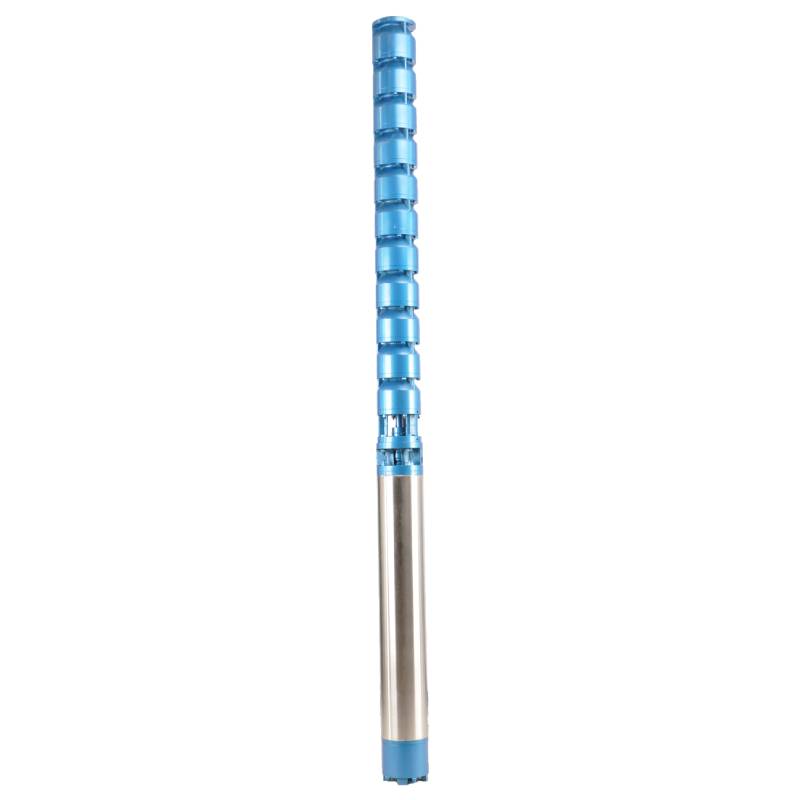Nov . 09, 2024 20:18 Back to list
Determining the Optimal Depth for Submersible Well Pump Installation
How Deep to Put a Submersible Well Pump
When it comes to installing a submersible well pump, one of the most critical decisions to make is determining the appropriate depth for the installation. Submersible pumps are deployed in various applications, primarily to supply water for residential, agricultural, and commercial uses, and the depth at which these pumps operate significantly influences their efficiency, longevity, and overall performance.
Understanding Submersible Well Pumps
Submersible well pumps are designed to be submerged in water. Unlike jet pumps that are installed above ground and draw water up, submersible pumps push water to the surface using a motor and impellers located deep within the well. These pumps are often more efficient, particularly in deeper wells, since they overcome the challenges associated with lifting water over considerable distances.
Factors Influencing Installation Depth
1. Water Table Depth The depth of the water table is the primary factor influencing how deep the submersible pump should be installed. The water table can fluctuate depending on seasonal changes, rainfall, and regional geography. To ensure a consistent supply, the pump should be installed below the lowest expected water level.
2. Pump Specifications Different submersible pumps have varying capabilities regarding lift height and flow rate. It is essential to select a pump that suits the specific depth of the well and the intended use of the water. Manufacturers typically provide guidelines on how deep their pumps can operate effectively.
3. Well Diameter The well's diameter also plays a role in determining the pump depth. Wider wells can accommodate larger pumps, while narrower wells may require smaller models. The pump should be positioned at a depth where it has enough clearance from the well casing to avoid issues with debris and sediment that can affect its operation.
4. Distance to the Water Source If the well is particularly deep or far from water-consuming points, it may be necessary to place the pump deeper to maximize efficiency. Moreover, if there is significant water demand, placing the pump deeper may help facilitate faster suction and pressure.
how deep to put submersible well pump

5. Temperature and Environmental Conditions The temperature of the water and the surrounding environment may influence pump placement. In extremely cold regions, positioning the pump deeper might prevent freezing, while in warmer climates, shallower placement may suffice. Additionally, local geological conditions can affect water quality and pump efficiency.
Typical Depths for Submersible Pumps
While the specific depth will vary based on the factors mentioned above, general guidelines suggest
- Residential Wells For typical residential use, submersible pumps are often installed at a depth of 25 to 100 feet, depending on the local water table. - Agricultural Wells For agricultural applications where higher volumes of water are needed, pumps might be placed deeper, often between 100 to 300 feet. - Commercial Applications Larger commercial wells can exceed 300 feet, with some installations going even deeper, particularly in regions with profound aquifers.
Installation Tips
1. Consult Local Regulations Before installation, check local regulations for well and pump installations to ensure compliance. 2. Hire a Professional Given the complexity involved with ensuring the proper depth and installation techniques, hiring a licensed professional is recommended to achieve optimal results. 3. Regular Maintenance Once installed, regular maintenance checks will help ensure the pump operates effectively. This includes monitoring for any changes in water levels and pump performance.
Conclusion
Determining how deep to put a submersible well pump is fundamental for ensuring an efficient and reliable water supply. By considering the water table depth, pump specifications, well diameter, distance to the water source, and environmental conditions, you can make an informed decision to benefit your specific needs. Always remember that consulting with a professional can provide guidance tailored to your situation, resulting in a successful water well installation that will serve you well for years to come.
-
Submersible Water Pump: The Efficient 'Power Pioneer' of the Underwater World
NewsJul.01,2025
-
Submersible Pond Pump: The Hidden Guardian of Water Landscape Ecology
NewsJul.01,2025
-
Stainless Well Pump: A Reliable and Durable Pumping Main Force
NewsJul.01,2025
-
Stainless Steel Submersible Pump: An Efficient and Versatile Tool for Underwater Operations
NewsJul.01,2025
-
Deep Well Submersible Pump: An Efficient 'Sucker' of Groundwater Sources
NewsJul.01,2025
-
Deep Water Well Pump: An Efficient 'Sucker' of Groundwater Sources
NewsJul.01,2025
-
 Submersible Water Pump: The Efficient 'Power Pioneer' of the Underwater WorldIn the field of hydraulic equipment, the Submersible Water Pump has become the core equipment for underwater operations and water resource transportation due to its unique design and excellent performance.Detail
Submersible Water Pump: The Efficient 'Power Pioneer' of the Underwater WorldIn the field of hydraulic equipment, the Submersible Water Pump has become the core equipment for underwater operations and water resource transportation due to its unique design and excellent performance.Detail -
 Submersible Pond Pump: The Hidden Guardian of Water Landscape EcologyIn courtyard landscapes, ecological ponds, and even small-scale water conservancy projects, there is a silent yet indispensable equipment - the Submersible Pond Pump.Detail
Submersible Pond Pump: The Hidden Guardian of Water Landscape EcologyIn courtyard landscapes, ecological ponds, and even small-scale water conservancy projects, there is a silent yet indispensable equipment - the Submersible Pond Pump.Detail -
 Stainless Well Pump: A Reliable and Durable Pumping Main ForceIn the field of water resource transportation, Stainless Well Pump has become the core equipment for various pumping scenarios with its excellent performance and reliable quality.Detail
Stainless Well Pump: A Reliable and Durable Pumping Main ForceIn the field of water resource transportation, Stainless Well Pump has become the core equipment for various pumping scenarios with its excellent performance and reliable quality.Detail
